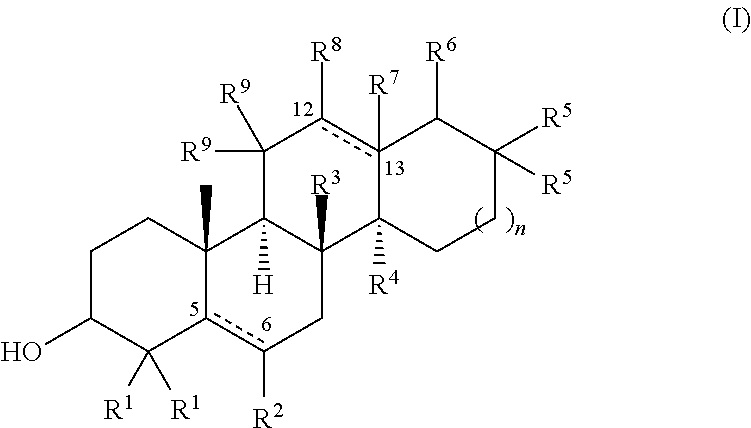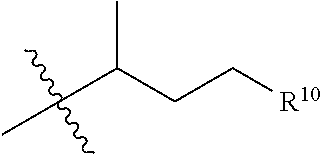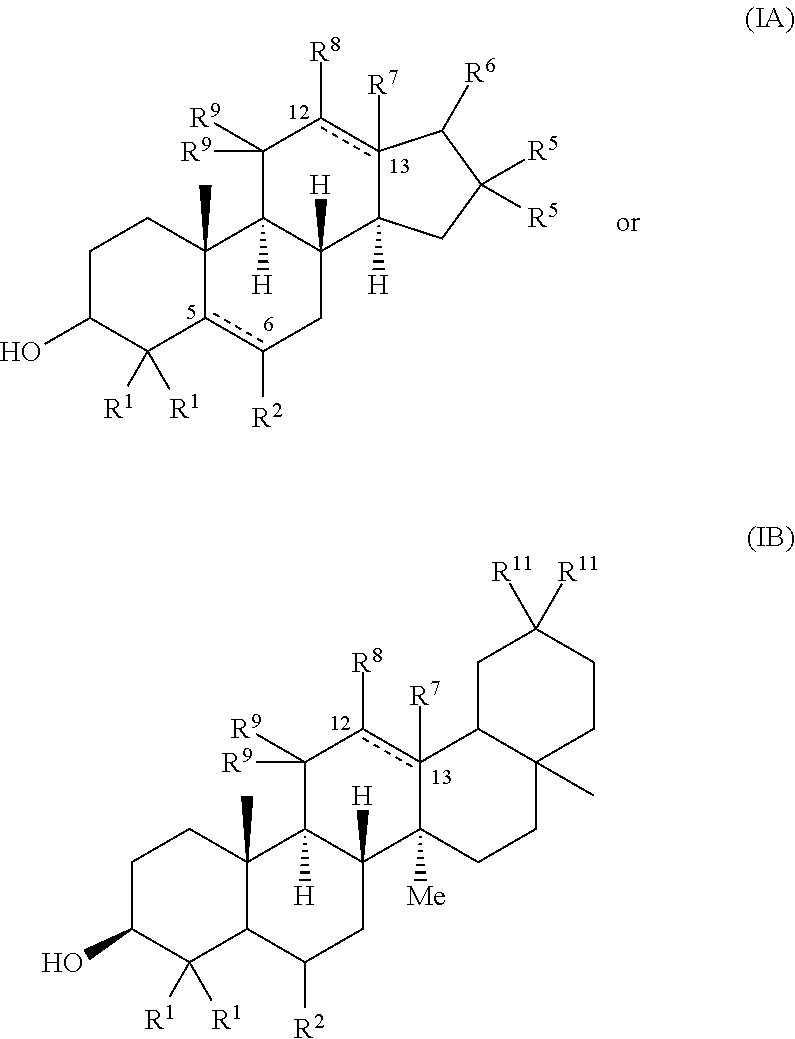Non-surgical method of treatment for cataract
a non-surgical and cataract technology, applied in the field of inhibitors of crystallin aggregation, can solve the problems of not being suitable for all patients and expensive surgery
- Summary
- Abstract
- Description
- Claims
- Application Information
AI Technical Summary
Benefits of technology
Problems solved by technology
Method used
Image
Examples
example 1
[0084]This Example describes a high-throughput method of screening for compounds that stabilize an exemplary aggregation-prone protein, Hsp27.
[0085]Differential scanning fluorimetry (DSF) was utilized to identify compounds that stabilize cryAB. In DSF experiments, the melting transition (Tm) of the protein target is measured in the presence of potential ligands (Cummings et al., J Biomol Screen 11, 854 (2006). DSF measures thermal unfolding of the target protein via the fluorescence of intrinsic tryptophans, or (more commonly) a dye, such as 1,8-anilinonapthalenesulfonic (bis-ANS) or Sypro Orange. Binding of a ligand adds free energy to the folded state or key intermediates, which limits unfolding and shifts the apparent Tm. These values are used to calculate the unfolding transition. When compounds bind to the target prior to heating, they stabilize against unfolding, shifting the ΔTm. For the case of cryAB and the cryAB R120G mutant, compounds that reduced the apparent Tm were sou...
example 2
[0091]This Example describes structure-activity relationship (SAR) studies of a sterol scaffold identified in the primary screen of Example 1. As described further below, the SAR revealed a general chemical structure (Formula I) for compounds that reduced the Tm of an amyloid-forming protein, R120G cryAB, by at least 2° C.
[0092]Thirty-two sterols with chemical structures related to 17-a-hydroxy-progesterone were collected and subjected to further testing (see Table 2). DSF experiments on this focused collection were performed using R120G cryAB and two compounds that reduced Tm by at least 2° C. were identified: 5a-cholestan-3b-ol-6-one and 5-cholesten-3b,25-diol. Many of the other closely-related sterols, including cholesterol, were inactive and the resulting SAR supported a rather specific molecular interaction.
TABLE 2ACTIVITY (shift in thermalNAMEstability at 100 μM)5-cholesten-3b,25-diol−2.0° C.5a-cholestan-3b-ol-6-one−3.0° C.5-cholesten-3b-ol−1.1° C.etiocholan-17b-ol-3-one+1.7° ...
example 3
[0095]This Example demonstrates that the compounds identified in Example 1 suppress amyloid formation. Significantly, the compounds are also able to reverse amyloid formation.
[0096]The DSF studies suggested that sterols suppress R120G cryAB amyloid formation. To test this idea, R120G cryAB (15 μM) was treated with 5-cholesten-3b,25-diol or cholesterol (100 μM) and its ability to aggregate was measured by electron microscopy. These studies confirmed that 5-cholesten-3b,25-diol, but not cholesterol or the solvent control, dramatically suppressed amyloid formation. Visual inspection of the solutions supported this conclusion, because only 5-cholesten-3b,25-diol reduced the opacity of the R120G cryAB mixture. Moreover, 5-cholesten-3b,25-diol also reversed the aggregation of pre-formed R120G cryAB amyloids, suggesting that it shifts the equilibrium towards non-amyloid structures.
[0097]To explore the mechanism of action of 5-cholesten-3b,25-diol, the binding site on R120G cryAB was explor...
PUM
| Property | Measurement | Unit |
|---|---|---|
| Temperature | aaaaa | aaaaa |
| Temperature | aaaaa | aaaaa |
| Time | aaaaa | aaaaa |
Abstract
Description
Claims
Application Information
 Login to View More
Login to View More - R&D
- Intellectual Property
- Life Sciences
- Materials
- Tech Scout
- Unparalleled Data Quality
- Higher Quality Content
- 60% Fewer Hallucinations
Browse by: Latest US Patents, China's latest patents, Technical Efficacy Thesaurus, Application Domain, Technology Topic, Popular Technical Reports.
© 2025 PatSnap. All rights reserved.Legal|Privacy policy|Modern Slavery Act Transparency Statement|Sitemap|About US| Contact US: help@patsnap.com



